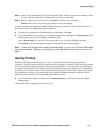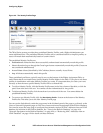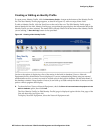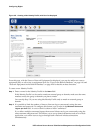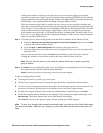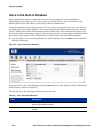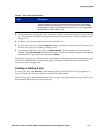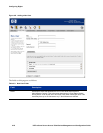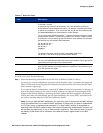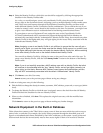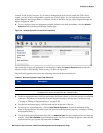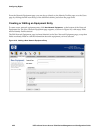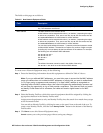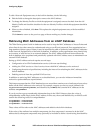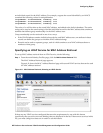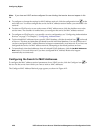
Configuring Rights
Table 4-3. New User Fields
Field Description
Username/MAC Address The user‘s username (logon ID) or MAC address. A user may be identified by one
or the other, not both.
A username may have up to 50 characters. Any 7-bit characters are allowed.
A MAC address can be entered with colons (:) or dashes (-) separating the tuples,
or without any separation. Thus, 00:01:a2:b3:4c:d5, 00-01-a2-b3-4c-d5,
and 0001a2b34cd5 are all valid formats for a MAC address.
You can also use the wildcard character —*“ (asterisk) as the last character to create
a wildcard MAC address. The asterisk can replace any number of digits or tuples
(including all), but must always be the last character in the address. For example,
the following are valid wildcard MAC addresses:
00:05:A3:16:00:*
00:05:A3:16:0*
00:05:A3:*
0005A3*
*
The wildcard character cannot be used in the middle of the string:
00:05:A3:*:00:02 is not a valid wildcard MAC address.
MAC Address User Check this box to indicate that the contents of the previous field is a MAC address.
You can use a MAC address rather than username to enable a client to get access
rights without having to log in and be authenticated.
Password The (optional) password associated with the user‘s logon name. This does not
apply if a MAC address is provided rather than a username. The password may be
up to 255 characters in length.
Confirm Password The same password, entered a second time as a confirmation.
To create a new user, do the following:
Step 1. Enter the identifying information about this user as defined in Table 4-3 above.
For users you want to authenticate using the built-in database, enter a username and password.
These will be used to match against the username and password the user enters into the 700wl
Series system’s logon page.
If you want to bypass authentication, enter a MAC address instead of a username. In this case, as
soon as the client connects to the system its MAC address is recognized as matching the MAC
address in the built-in database. Assuming the MAC address has been assigned to an Identity
Profile, that client will immediately get the rights defined by the Access Policy associated with
the client’s matching Identity Profile and Connection Profile.
Note: If you use wildcard MAC addresses, you must take care to ensure that the MAC address
range you define does not include the MAC addresses of clients that you want to authenticate
(i.e. to logon using a username and password). If a client‘s MAC address is recognized as
matching within the MAC address range, that client will bypass the authentication process and
will not have the opportunity to log on and provide a username. That client will then not match
an Identity Profile based on its username, but rather will receive rights based on its MAC
address.
HP ProCurve Secure Access 700wl Series Management and Configuration Guide 4-19



